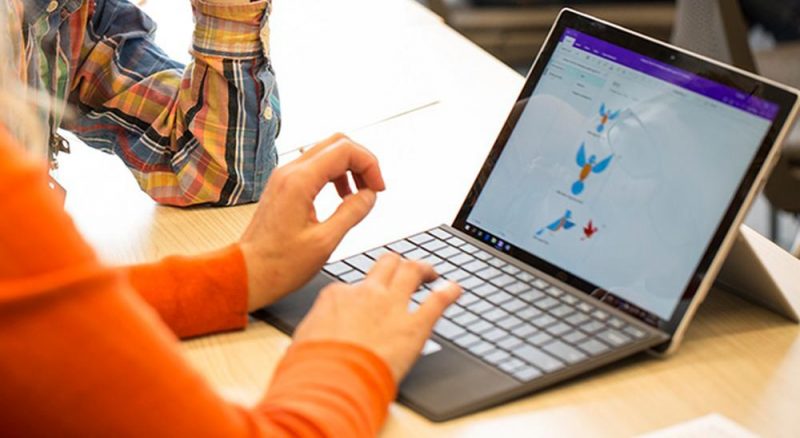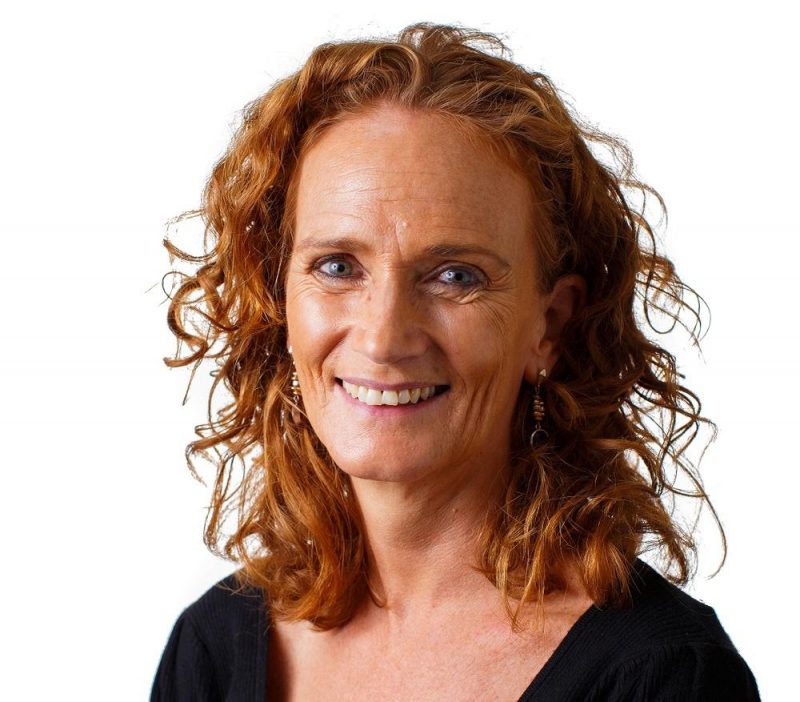How one Tullamore school is using technology to reimagine learning

The Sacred Heart School in Tullamore may be nearly 200 years old but it’s at the cutting edge of education due to its integrated use of technology in the classroom.
Teachers and students at the all-girls school now use individual Microsoft Surface devices that allow them to embrace online tools and interactive teaching techniques inside and outside of the classroom. This digital approach to learning came into its own during Covid-19 lockdown, with teachers and students able to quickly adapt to remote lessons.
To find out more about the Co Offaly school’s journey towards the classroom of the future, we spoke to its deputy principal Orla Healy.
Preparing students for a changing world
The school was quick to see that it needed to prepare its students for a changing world. As they used to tell the parents of incoming first years, many of the jobs that the girls would have in the future were yet to be invented.
“Our principal Pauline McKenna is always looking to see how teaching and learning could be enhanced and advanced,” says Orla. “We knew that technology was the way to go.”

An extensive research process started eight years ago to source suitable software and hardware before the decision was made to provide every teacher with a new Microsoft Surface device which was funded by the Board of Management of the school. Over the course of a year, Microsoft engaged in extensive training with the school on tools like OneNote, Flipgrid, Immersive Reader and Office 365 to prepare for the transition. This allowed them to develop at a very fast pace.
“The training that Microsoft would have provided in that year was vital,” says Orla, noting the time and effort that teachers put in to develop their skills.
The current fifth year group purchased their own Windows device when they entered first year. Subsequent years would later upgrade to the Microsoft Surface Go.
“We didn’t have the problems you’d imagine, like them dropping the device etc,” adds Orla. “That would be one thing we’d say to other schools. The students actually love their device and wouldn’t give it up to anybody. It’s like an extension of their arm.”
The change ushered in a move away from the ‘chalk and talk’ approach where children watch while the teacher works at the board. Now, teachers can take their device and walk around the room, projecting what’s on their device onto the board and students can project their screen to share their work also. This changed the culture of how they do things in the classroom.
Microsoft OneNote provides a digital canvas or whiteboard that is easily shared with students, where teachers can write, type or add links, videos, images and audio for students. It allows for a more interactive and immersive learning experience.
Classrooms have become active spaces where different groups work on different collaborative projects and students can work at a pace that suits them. The teacher can allocate and oversee multiple projects via Microsoft Teams and use it to orchestrate the class. All while the students use it to discuss, share files and collaborate on projects in real time, both in and out of the class.
Classes can even be recorded and students can rewatch them at their own pace. Virtual folders have also replaced physical ring binders.
This use of Office 365 can also make learning more accessible, with tools like the Immersive Reader. It can help students with dyslexia by providing audio versions of written documents or by providing visual clues for words.
This move away from a one-size-fits-all approach to lessons is ideally suited to a generation of digital natives and is already improving student grades and engagement.
“It definitely has improved all the students’ engagement,” says Orla. “They love learning like this. They love being able to be organised with their One Note folders. They love being able to access lesson recordings to review and reinforce what was covered in class.
“And the teachers have become much better at that. Some of them were quite shy at the beginning of lockdown about putting their face on the camera! Now there’s no problem at all and nearly everything is done through Teams now. That took a long time, but the jump was quick in the end.”
A seamless shift to remote learning
When the Covid-19 crisis closed our schools, Sacred Heart School already had the technical infrastructure and knowledge in place to adapt to remote teaching. Classes were conducted over Teams, recorded so that they could be easily accessed, and assignments could be easily corrected and returned with a variety of feedback methods possible, including audio, inking and text comments.
The experience justified the school’s leap of faith, proving that this approach could work inside and outside the classroom, and it reinforced how these tools could support teaching and learning.
“What has happened is we did it, we did it really well, but we put in the training and that’s really important,” recalls Orla.
“Technology is only a learning tool. At the end of the day, how you teach and how you engage with your students is as important or more important. It’s about the work you put up for your students, the work that you put into the work that you put up, how you teach it and the passion that you have for your subject. This can never be underestimated.”
Embracing technology as a teaching tool
Stephen Eustace is a teacher and a customer success manager with Microsoft, who has worked with Sacred Heart School and other Irish schools to help them to improve the learning experience with Microsoft tools. He praised the work that has been done at the Tullamore school.

“I definitely feel that Sacred Heart are leading the field,” Stephen says. “They are doing some very innovative things inside and outside the classroom with the technology. I like how the technology is woven into the school day.
“It’s not just ‘This is our teaching and this is our tech.’ They have married them effectively and they’re getting the best of both, if you will. They’re using it very effectively.”
He noted that Microsoft’s Surface devices and Microsoft’s Education platform can benefit both the student’s schoolwork and their development of future-ready skills.
“It’s not just about the tool, it’s not just about the tech and it’s not just about the learning of the curriculum,” he explains.
“It’s about whole student development as well. I’m always thinking how we can prepare students for the world of what’s next? Not necessarily the world of work, just the world of what’s next. It is important to support students development of key skills such as communication, collaboration, creativity and critical thinking.
“All of that is intertwined and interwoven in what you’re doing as an educator, so you’re not just teaching maths. You’re not just teaching maths using a specific tool. You’re using a tool that’s emerging, engaging, that allows this real, whole student development to take place.”
For schools that are interested in adopting more technology into the classroom or into their learning experiences, Stephen has one simple piece of advice.
“The best time to start off is right now. The best time to start off with Microsoft Education Platform is right now because the features have never been better. Today’s the best day.”
To find out more and continue your learning journey, visit Microsoft’s Remote Learning website.
This article was taken from the Irish Independent.